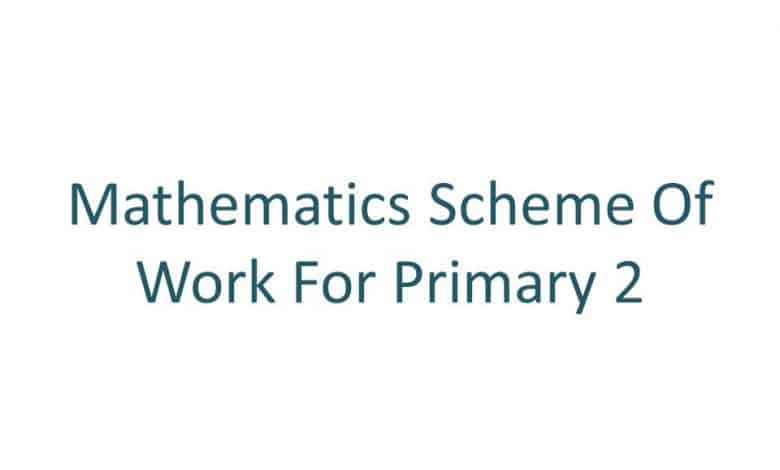Scheme of Work
Mathematics Scheme Of Work For Primary 2

This article provides you with the Mathematics scheme of work and the curriculum for the first term, second term, and third term for primary 2 pupils.
First term
Whole numbers 1-200
Counting of numbers from 1-200.
- Identification and reading of numbers from 1-200
- Introduction of place value of a number
- Ordering of numbers up to 200
- Writing numbers up to 200
Whole numbers 1-200
- Introduction of place value of a number
- Ordering of numbers up to 200
- Writing numbers up to 200
Fractions I
- ½ and ¼ of any given collection
- ¾ of any given collection
Fractions II
- ¾ of any given collection
Addition I
- Revision of addition of 2-digit numbers without exchanging or renaming
- Addition of 3-digit numbers without exchanging or renaming
- Addition of 2-digit numbers with exchanging or renaming
- Addition of 3 numbers taking two at a time
Addition II
- Addition of 2-digits with exchanging or renaming
- Addition of 3 numbers taking two a time
Subtraction
- Subtraction of 2-digits numbers without exchanging or renaming
- Subtraction of 2-digit numbers without exchanging and renaming
Multiplication
- Multiplication as repeated addition and the use of symbol “x”
Second term
Open Sentence
Pupils should be able to:
- find missing numbers in an open sentence.
- solve simple related quantitative aptitude problems
Money
Pupils should be able to:
- Enumerate the uses of money
- Recognizes all types of Nigerian coins and bank notes
- change money up to N20 into small units and shop with money not greater than N20
Length
Pupils should be able to:
- compare their natural units with another e.g. arm’s length
- identify the differences in arm’s length and other parts of the body used for measurement
- uses meters and centimeters as standard measuring units.
- identify the need for lengths and measurement using standardized units
Time
- Reading clocks to the hour and half hour.
- Naming days of the week and arranging them in order
Weight
- Comparison and ordering of objects by weight
Read: List of Nursery and Primary School Subjects
Third term
Capacity
- Identifying and naming of objects that could be used for measuring capacity e.g. cups, empty containers, bucket etc.
- Ordering of containers based on their capacities
Areas
- Areas of different objects; rectangle, squares, triangle, circle and other surfaces
- The idea of larger than, smaller than largest, smallest and the same
Three dimensional shapes
- Properties of a cube and a cuboids: faces, corners, edges
- Properties of a cylinder and a sphere: curved surfaces
Two dimensional shapes
- Identification of shapes, i. Square, ii. Rectangle, iii. Triangle
- Square corners” in shapes
Data Collection
Pupils should be able to:
- collect data and arrange them in arrays
- collecting data and arranging them in groups such as group of boys and groups of girls
